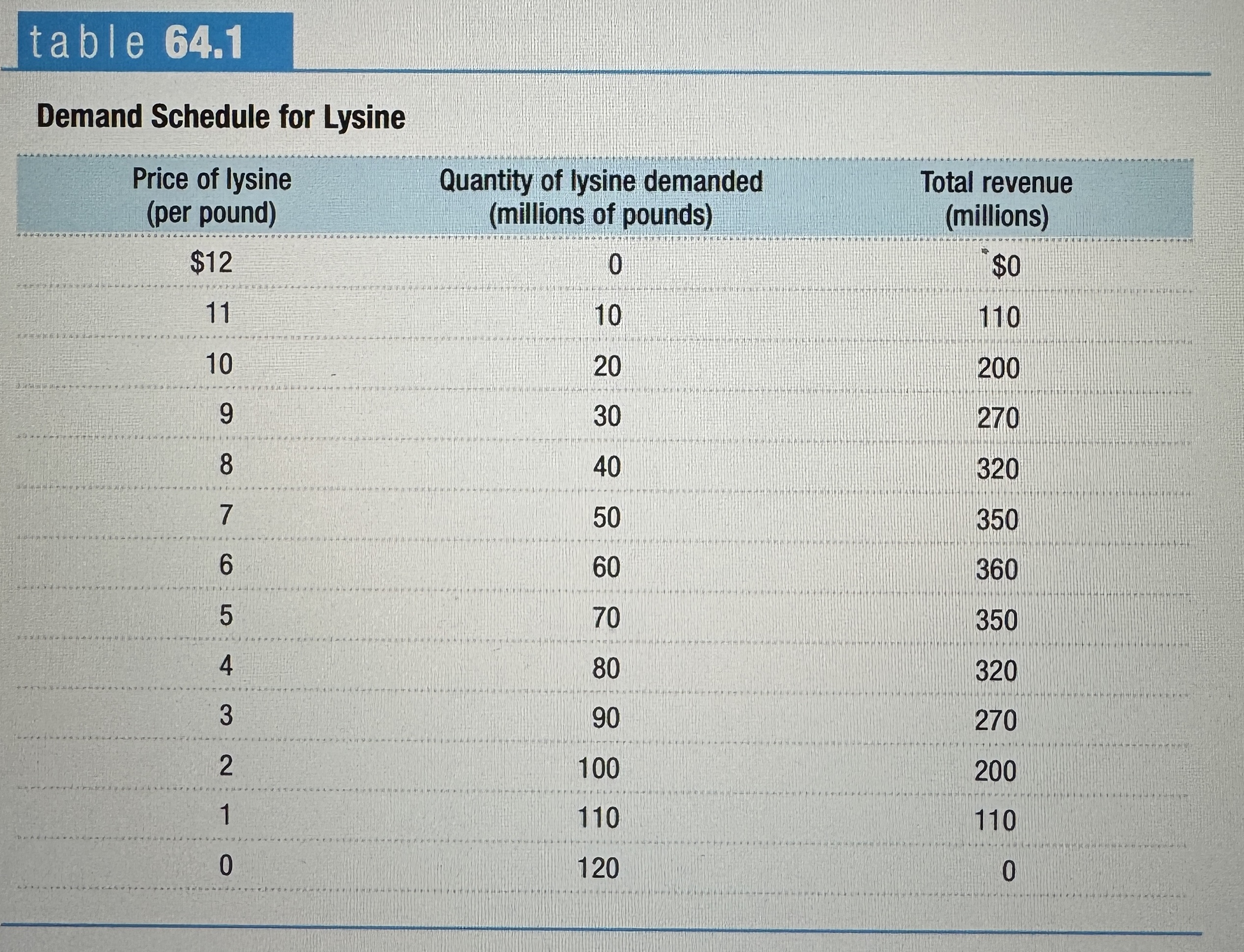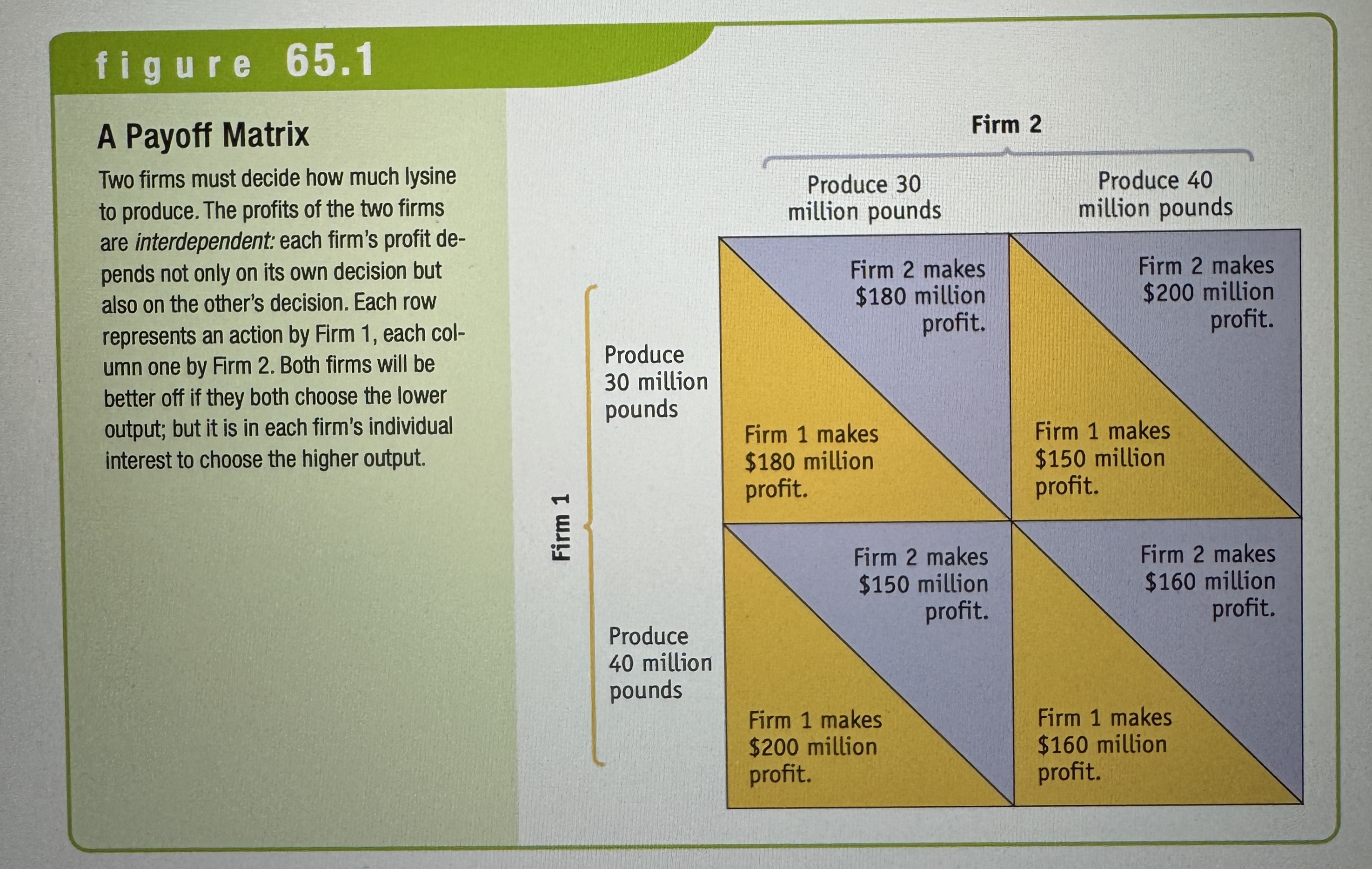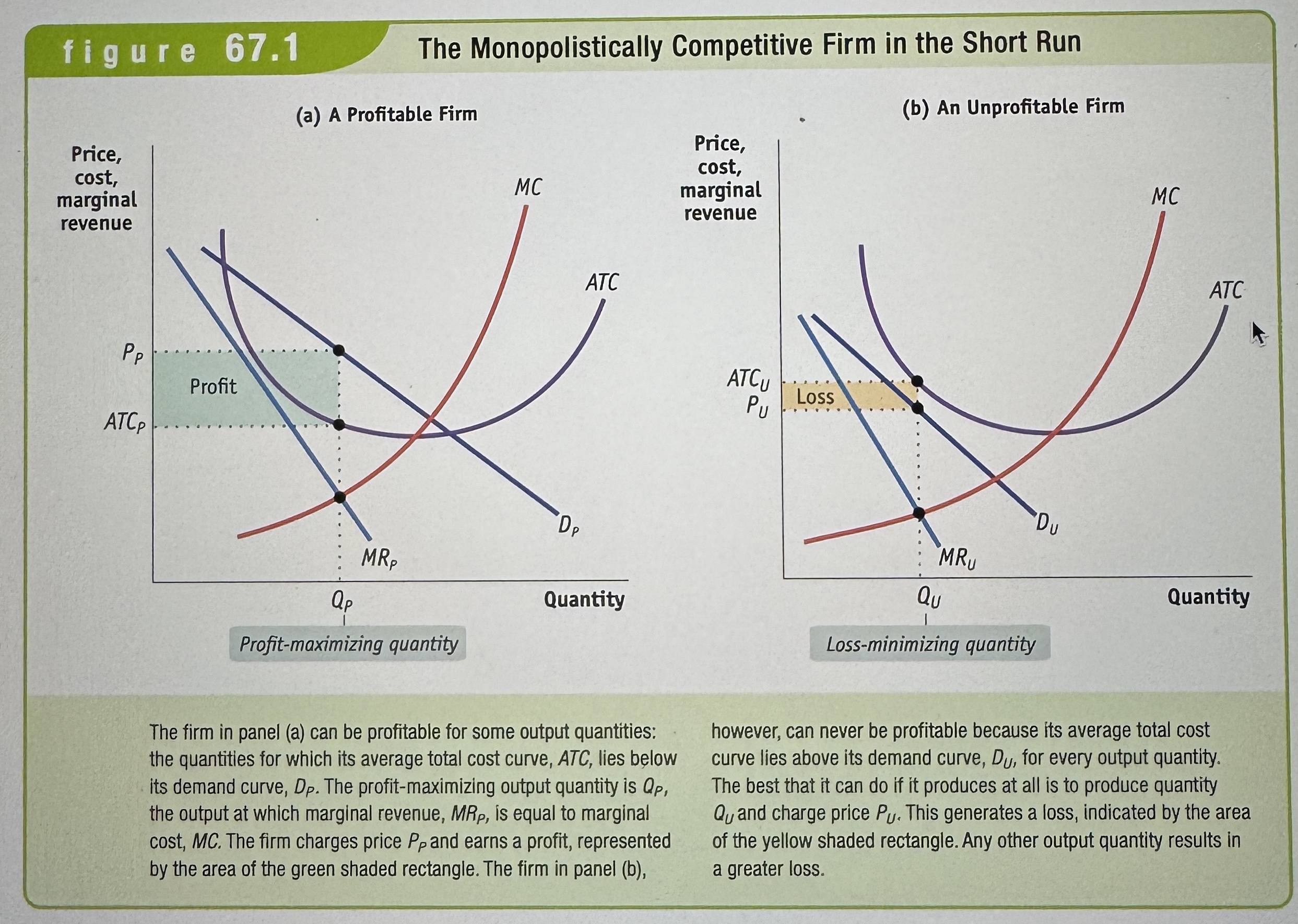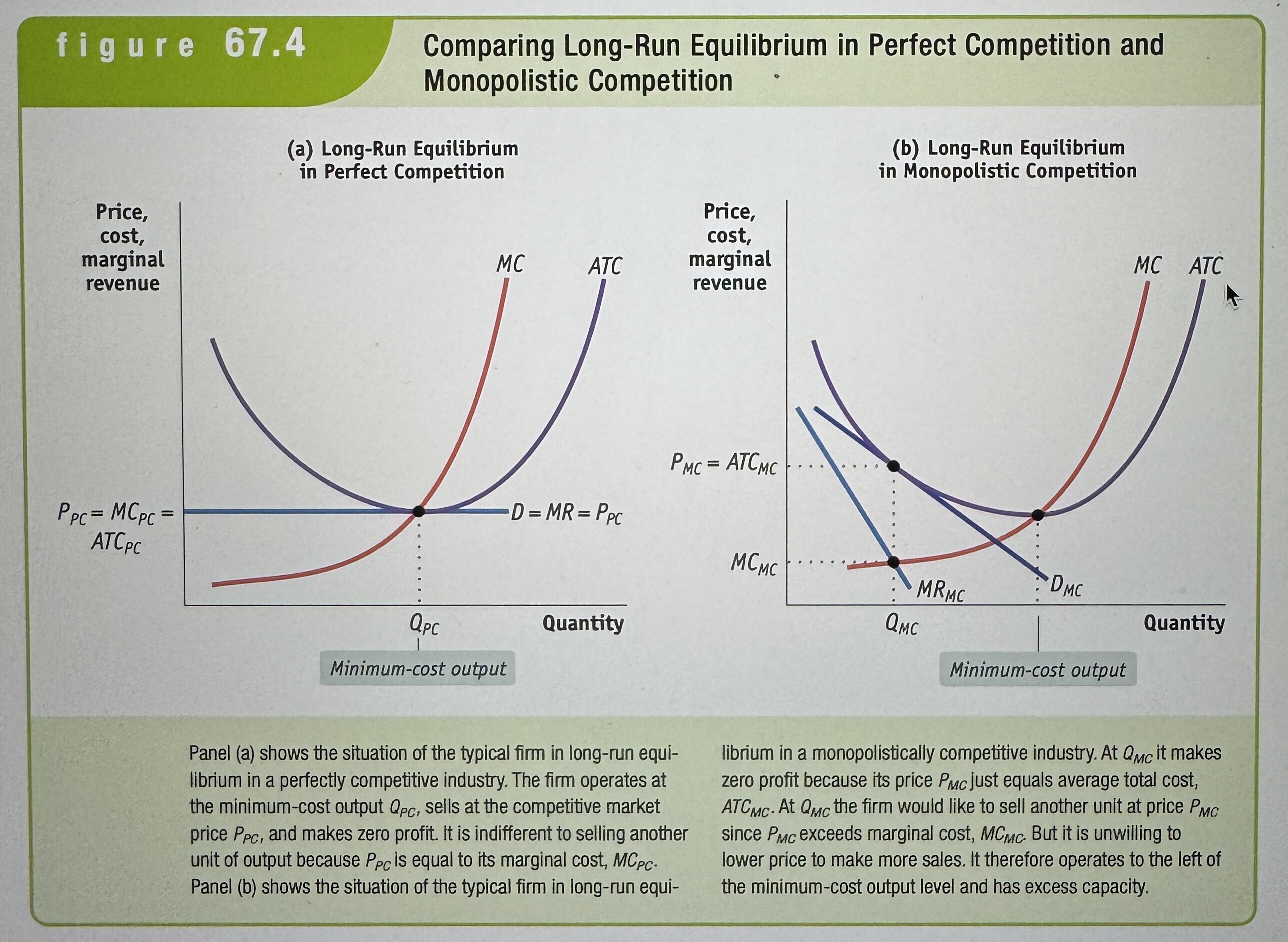Chapter 12 - Market Structures: Imperfect Competition in Markets
1/29
Earn XP
Description and Tags
Name | Mastery | Learn | Test | Matching | Spaced |
|---|
No study sessions yet.
30 Terms
Interdependence
When the outcome/profit of each firm depends on the actions of the other firms in the market.
Duopoly
In oligopoly consisting of only two firms is a duopoly. Each firm is known as a duopolist.
Collusion and Cartels
Sellers engage in collusion when they cooperate to raise their joint profits. A cartel is a group of producers that agree to restrict output in order to increase prices and their joint profits.
Demand Schedule for Lysine
Ex.

What effect does producing one unit of a good have?
A positive quantity effect: One more unit is sold, increasing total revenue by the price at which that unit is sold.
A negative price effect: in order to sell one more unit, the monopolist must cut the market price on all units sold.
Noncooperative behavior
When firms ignore the effects of their actions on each other’s profits.
Game theory
The study of behavior in situations of interdependence.
Payoff
The reward received by a player in a game, such as the profits earned by an oligopolist.
Payoff Mattrix
Shows how the payoff to each of the participants in a two player game depends on the actions of both. Such a matrix helps us analyze situations of interdependence.

The prisoners' dilemma
The prisoners' dilemma is a game based on two premises:
(1) Each player has an incentive to choose an action that benefits itself at the other player's expense; and (2) When both players act in this way, both are worse off than if they had acted cooperatively.

Dominant Strategy
An action is a dominant strategy when it is a player’s best action, regardless of the action taken by the other player.
Nash/Noncooperative Equilibrium
The result, when each player in a game chooses the action that maximizes his or her payoff, given the actions of other players.
Strategic Behavior
When a firm attempts to influence the future behavior of other firms.
Tit for Tat
This strategy involves playing cooperatively at first, then doing whatever the other player did in the previous period.
How Repeated Interaction Can Support Collusion
Ex.

Tacit Collusion
When firms limit production and raise prices in a way that raises each other’s profits, even though they have not made any formal agreement.
Antitrust Policy
Involves efforts by the government to prevent oligopolistic industries from becoming or behaving like monopolies.
Price War
Occurs when tacit collusion breaks down and aggressive price competition causes prices to collapse.
Product differentiation
An attempt by a firm to convince buyers that its product is different from the products of other firms in the industry.
Price leadership
One firm set its price first, and other firms then follow.
Nonprice competition
Firms that have tacit understanding not to compete on price often engage in intense nonprice competition, using advertising and other means to try to increase their sales.
The Monopolistically Competitive Firm in the Short Run
Ex.

Zero-profit equilibrium
In the long run, a monopolistically competitive industry ends up in this. Each firm makes zero profit at its profit-maximizing quantity.
Entry and Exit Shift Existing Firms' Demand Curves and Marginal Revenue Curves
Ex.

The Long-Run Zero-Profit Equilibrium
Ex.

Comparing Long-Run Equilibrium in Perfect Competition and Monopolistic Competition
Ex.

Excess Capacity
Firms in a monopolistically, competitive industry have excess capacity: they produce less than the output at which average total cost is minimized.
How can firms differentiate their products?
They can differentiate by style or type. They can differentiate by location. They can differentiate by quality.
Brand Names
A name owned by a particular firm that distinguishes its products from those of other firms.